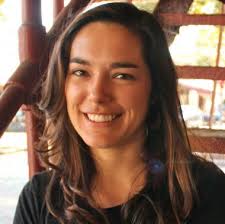Sharing Your Internet Connection as a Humanitarian Act
 uProxy is a browser extension that lets you share your Internet connection with people living in repressive societies. Much of the world lives in countries that severely censor and restrict Internet access. uProxy makes it a little easier to bring the free and open Internet to some of the darkest corners of the world. How does it work? Find out in this interview with Lucy He, Raymond Cheng, and Salome Vakhtangadze.
uProxy is a browser extension that lets you share your Internet connection with people living in repressive societies. Much of the world lives in countries that severely censor and restrict Internet access. uProxy makes it a little easier to bring the free and open Internet to some of the darkest corners of the world. How does it work? Find out in this interview with Lucy He, Raymond Cheng, and Salome Vakhtangadze.
Lucy and Salome are engineers at Google Ideas, a team at Google that builds tools against oppression. Raymond is a core developer for uProxy and PhD student at the University of Washington, where uProxy is being developed. Together they talk a bit about the future of uProxy and plans for the Open Source Day codeathon taking place during Grace Hopper's Open Source Day later this year.
Q: What made you decide to participate in the GHC Open Source Day codeathon?
uProxy is a social application. It has the highest impact when communities of families, friends, and organizations come together to share safe access to the Internet with others in their community. We feel that the individuals we’ve met at GHC, previously, share in the passion for building communities, with the help of technology, that enable people to support each other in meaningful ways.
Q: Have you attended GHC before?
Some uProxy contributors have. They described meeting a community with incredibly diverse interests and expertise and a shared drive to do good, which makes us excited to participate this year.
Q: Tell us about the open source project you'll have attendees work on at the codeathon.
uProxy exists to help people with restricted or insecure access to the Internet get to the content they care about safely. By enabling users to share their route to the Internet with each other, uProxy can make one person’s open Internet connection into a gateway for many of their friends.
Q: What will they learn?
We don’t expect attendees to have any experience with open source, but by the end of the codeathon, we hope attendees will be familiar with using GitHub, will understand how to contribute code (and not specifically to just uProxy!), and will have started to work on something they find interesting.
Q: What will the project get out of the codeathon?
In addition to being able to share uProxy with a group of attendees, we are excited to help grow the open source community little by little. If we can inspire a few attendees enough that they then engage their friends as well, we would be very happy!
Q: What are uProxy's top priorities in the open source community right now?
uProxy connects its users through social networks, like Facebook. One of our top priorities is to learn from the open source community about which social networks would be best for an application like uProxy, and to find contributors to help move us in new exciting directions.
Q: What other open source humanitarian projects is your organization working with?
Within University of Washington’s Networking Lab, uProxy is the only open source humanitarian project.
Q: How diverse is your project's community?
Diverse, but not diverse enough! Female engineers in our community have previously given talks about uProxy to different groups to bring more voices into the uProxy conversation. Our contributors come from different cultures, educational backgrounds and technical experiences, but we know there are many more perspectives and ideas we need in our community before uProxy can reach its full potential.
This article is part of the Grace Hopper Celebration of Women in Computing series for GHC 2015. The annual Grace Hopper Celebration of Women in Computing is designed to bring the research and career interests of women in computing to the forefront. GHC 2015 will be held October 14-16, 2015, in Houston, Texas.
| Why you should share your Internet connection was authored by Jen Wike Huger and published in Opensource.com. It is being republished by Open Health News under the terms of the Creative Commons Attribution-ShareAlike 4.0 International License. The original copy of the article can be found here. |
- Tags:
- building communities
- censorhip
- GHC Open Source Day codeathon
- Github
- Google Ideas
- Grace Hopper Celebration of Women in Computing conference (GHC 2015)
- Humanitarian Act
- Internet connection
- Jen Wike Huger
- Lucy He
- open health
- open Internet connection
- open source humanitarian projects
- open source project
- Raymond Cheng
- repressive societies
- safe access to the Internet
- Salome Vakhtangadze
- social application
- social networks
- tools against oppression
- University of Washington
- University of Washington Networking Lab
- uProxy
- Login to post comments